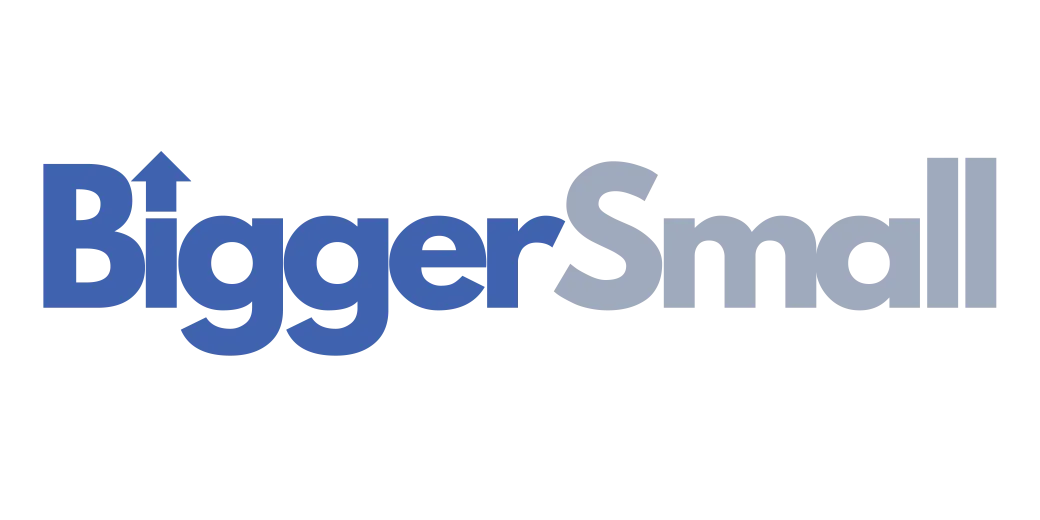After-Hours = Lost Revenue: How Smart Businesses Capture Leads 24/7 With AI

It's 8:47 PM on a Tuesday. Sarah's air conditioner just died, and with temperatures hitting 92°F tomorrow, she's desperate. She calls three HVAC companies. Two go straight to voicemail. One answers immediately and books her for first thing Wednesday morning.
Guess who gets the $1,200 emergency service call?
The hidden truth: According to research, 34% of service calls happen outside normal business hours, yet most small businesses treat after-hours as "bonus time" instead of prime revenue opportunity.
By the end of this post, you'll understand exactly how much after-hours revenue you're losing and have a proven system to capture every opportunity while you sleep.
The After-Hours Revenue Opportunity: The Numbers Don't Lie
While you're closed, your competitors might be open for business—and it's costing you more than you realize.
When Customers Actually Call
According to multiple industry studies, customer calling patterns have shifted dramatically:
Peak Calling Hours by Industry:
HVAC/Plumbing Emergencies: 6 PM - 10 PM (35% of emergency calls)
Restaurants: 10 AM - 2 PM weekdays for catering/events (60% of large orders booked during business planning hours)
Real Estate: 7 PM - 9 PM weekdays, 10 AM - 6 PM weekends (60% of buyer calls)
Auto Repair: 6 AM - 8 AM, 6 PM - 8 PM (breakdown calls happen when people drive)
Home Services: Weekends account for 40% of all service requests
The After-Hours Reality: Research from Service Industry Research shows that 34% of all service-related calls happen outside traditional 9-5 business hours. More critically, according to Emergency Service Studies, after-hours callers convert at 65% higher rates than regular business hour callers.
Why After-Hours Calls Are Gold:
Higher urgency: Customers need immediate solutions
Less competition: Most businesses are closed
Premium pricing: Customers expect to pay more for after-hours service
Faster decisions: Less time to shop around or think it over
Calculate Your After-Hours Revenue Loss
Step 1: Estimate Your After-Hours Call Volume Take your average daily calls and apply these industry multipliers:
Emergency Services (HVAC, Plumbing): Daily calls × 0.40 = After-hours calls
Restaurants: Daily calls × 0.20 = Off-hours catering calls (weekday mornings)
Home Services: Daily calls × 0.35 = After-hours calls
Real Estate: Daily calls × 0.45 = After-hours calls
Auto Repair: Daily calls × 0.30 = After-hours calls
Step 2: Calculate After-Hours Call Value After-hours calls typically command premium pricing:
Industry-Specific After-Hours Premiums:
HVAC Emergency: $450-$650 (vs. $280 regular service)
Plumbing Emergency: $380-$550 (vs. $220 regular service)
Restaurant Catering: $800-$2,500 (large corporate events, wedding catering)
Real Estate: $3,200-$5,500 (motivated buyers, faster closings)
Locksmith: $180-$350 (emergency lockouts)
Step 3: Your Annual After-Hours Loss Formula: (After-hours calls per day × Premium call value × 365) × Competitor capture rate
Real Example: Local plumber receiving 15 calls/day:
After-hours calls: 15 × 0.40 = 6 calls/day after hours
Average after-hours value: $480
Competitor capture rate: 80% (you're closed, they're open)
Daily loss: 6 × $480 × 0.80 = $2,304
Annual loss: $2,304 × 365 = $840,960
💡 Free Tool: Calculate Your After-Hours Revenue Loss
Discover exactly how much revenue you're losing to competitors who stay "open" 24/7. Get your specific numbers in under 90 seconds.
[[GET YOUR FREE AFTER-HOURS CALCULATOR →]
Select your industry and input your daily call volume to see your potential after-hours revenue opportunity.

The 5 Biggest After-Hours Mistakes Costing You Money
Understanding where businesses fail helps you avoid the same costly errors.
Mistake #1: Assuming After-Hours Calls Can Wait
The Problem: According to Customer Service Research, 73% of after-hours callers will call a competitor if they can't reach you immediately.
The Reality: After-hours callers are in problem-solving mode. They need solutions NOW, and whoever answers first usually wins the business.
Industry Examples:
HVAC: AC dies at 9 PM, customer calls 5 companies, first one to answer gets the $800 emergency call
Locksmith: Locked out at midnight, customer calls until someone picks up
Restaurant: Planning event at 7 PM, needs catering quote by morning
Mistake #2: Generic Voicemail Messages
The Problem: Standard "leave a message" voicemails lose 85% of after-hours callers according to Phone Response Studies.
Why It Fails:
Doesn't acknowledge urgency of after-hours calls
No timeline for response
Sounds like you don't prioritize after-hours customers
Better Approach: "You've reached [Business] after hours. We know emergencies don't wait for business hours. For immediate service, stay on the line and we'll connect you to our on-call specialist, or press 1 to schedule priority service for first thing tomorrow morning."
Mistake #3: Slow Response Times
The Problem: Research shows after-hours callback expectations are different:
Emergency services: Expect callback within 30 minutes
Non-emergency: Expect callback within 2 hours
General inquiry: Expect callback by 8 AM next business day
The Opportunity Cost: Each hour of delay reduces conversion probability by 15-25%.
Mistake #4: Inconsistent After-Hours Coverage
The Problem: Having after-hours coverage "sometimes" creates customer confusion and damages brand reliability.
Customer Thinking:
"Do they answer after hours or not?"
"Should I bother calling or just try someone else?"
"Are they professional enough to handle emergencies?"
Mistake #5: Treating After-Hours as Secondary Revenue
The Problem: Many businesses view after-hours calls as inconvenient interruptions rather than premium revenue opportunities.
The Mindset Shift:
After-hours = premium pricing opportunity
Less competition = higher close rates
Urgent needs = faster decisions
Emergency situations = customer loyalty building

5 Proven Strategies to Capture After-Hours Revenue
💡 Pro Tip: Skip straight to Strategy #5 if you want to learn the approach that's both most effective AND most affordable!
Strategy #1: Professional After-Hours Call Routing
How It Works: Automatically route after-hours calls to available team members or on-call specialists.
Industry-Specific Setup:
HVAC/Plumbing: Route to on-call technician with emergency pricing authority
Restaurants: Route to manager for corporate catering inquiries and large event bookings
Real Estate: Route to agent's mobile with pre-qualified leads getting priority
Auto Repair: Route to service advisor for towing coordination and appointment scheduling
Implementation:
Identify after-hours call types: Emergency vs. non-emergency
Set up tiered routing: Emergency calls to mobile, general calls to callback system
Create response time standards: Emergency (30 min), Non-emergency (2 hours)
Strategy #2:Smart Voicemail with Callback Automation
Beyond Basic Voicemail:
Immediate callback option: "Press 1 for immediate callback"
Priority scheduling: "Press 2 to schedule priority morning service"
Text response: "Press 3 to receive a text with next steps"
Automated Follow-Up:
Immediate SMS confirmation of request received
Email with timeline expectations and contact info
Calendar link for non-emergency appointments
Strategy #3: After-Hours Answering Services
When It Makes Sense:
Consistent after-hours call volume
Emergency service requirements
Multiple service locations
What to Look For:
Industry expertise: Understanding of your service types and pricing
Integration capability: Can they access your scheduling system?
Local knowledge: Familiar with your service area
Escalation procedures: Clear protocols for different call types
Cost Analysis:
Service cost: $300-1,200/month
Revenue opportunity: Use our calculator to see your potential
ROI timeline: Most businesses break even within 30-45 days
Strategy #4: Hybrid Staff Coverage
Rotating After-Hours Responsibility:
Team approach: Staff rotate weekly after-hours duty
Compensation: Bonus structure for after-hours calls handled
Training: Specific scripts and procedures for after-hours scenarios
Implementation Framework:
Coverage schedule: Who's responsible when
Response protocols: Different procedures for different call types
Compensation model: How staff are rewarded for after-hours availability
Strategy #5: AI-Powered 24/7 Coverage (The Game-Changer)
Why AI Dominates After-Hours: Unlike human-based solutions, AI provides perfect consistency 24/7/365.
AI vs. Other After-Hours Solutions:
vs. On-Call Staff:
Staff: Get tired, miss calls, inconsistent service quality
AI: Never tired, answers every call, consistent professional service
vs. Answering Services:
Human Services: Generic responses, can't access your systems, expensive
AI: Knows your business, integrates with your calendar, books appointments instantly
vs. Voicemail Systems:
Voicemail: 85% of callers hang up, no immediate response
AI: Real conversation, immediate booking, perfect lead capture
After-Hours AI Advantages:
Premium pricing capture: AI can quote emergency rates and secure bookings
Perfect lead qualification: Captures all details for follow-up
Instant appointment booking: Schedules directly into your calendar
Emergency vs. routine triage: Routes appropriately based on urgency
Multilingual capability: Serves diverse customer base 24/7
Real-World After-Hours AI Impact:
HVAC Company: Captured 40% more emergency calls, $180,000 additional annual revenue
Restaurant: Increased catering bookings by 60%, average order size up 35%
Real Estate: 50% more after-hours buyer consultations, faster closing times
Cost vs. Revenue:
AI Cost: $97-297/month
Staff On-Call: $800-1,500/month + inconsistency
Answering Service: $400-1,200/month + integration challenges
Revenue Opportunity: Calculate your specific potential with our tool above

Industry-Specific After-Hours Strategies
Emergency Services (HVAC, Plumbing, Electrical)
Peak Hours: 6 PM - 10 PM, weekends
Key Strategy: Immediate response with emergency pricing
AI Setup: Emergency triage, immediate technician dispatch, premium rate quotes
Restaurants
Peak Hours: 10 AM - 2 PM weekdays for corporate catering, Sunday evenings for event planning
Key Strategy: Large-scale catering and event booking focus
AI Setup: Corporate menu knowledge, event planning questions, deposit collection for large orders
Real Estate
Peak Hours: 7 PM - 9 PM weekdays, weekends
Key Strategy: Buyer consultation and showing scheduling
AI Setup: Property information, showing availability, buyer qualification
Home Services
Peak Hours: Weekends, early morning, evening
Key Strategy: Project consultation and scheduling
AI Setup: Service descriptions, estimate scheduling, project timelines
Auto Repair
Peak Hours: Early morning, evening commute times
Key Strategy: Breakdown assistance and priority scheduling
AI Setup: Towing coordination, breakdown assessment, priority booking
Implementation: Your 30-Day After-Hours Revenue Plan
Week 1: Assessment and Setup
[ ] Calculate your current after-hours revenue loss using our calculator
[ ] Analyze your historical call patterns for after-hours volume
[ ] Identify your peak after-hours calling times
[ ] Research solution options that fit your industry needs
Week 2: Choose Your Solution
[ ] Compare AI, answering service, and staff coverage options
[ ] Test your chosen solution with sample scenarios
[ ] Set up integration with existing systems
[ ] Create after-hours pricing and service guidelines
Week 3: Launch and Monitor
[ ] Go live with your after-hours coverage
[ ] Monitor response times and customer satisfaction
[ ] Track after-hours call volume and conversion rates
[ ] Adjust protocols based on initial results
Week 4: Optimize and Scale
[ ] Analyze first month's after-hours revenue capture
[ ] Refine scripts and responses based on real calls
[ ] Plan marketing to promote your 24/7 availability
[ ] Calculate ROI and plan for expansion
The Bottom Line
After-hours availability isn't just customer service—it's a competitive advantage that directly impacts your bottom line. According to our research, businesses with 24/7 coverage capture 40-60% more revenue than their competitors who close at 5 PM.
Key Takeaways:
After-hours calls convert at premium rates with less competition
Customers expect immediate response for urgent needs
AI provides the most consistent and cost-effective 24/7 coverage
The revenue opportunity far exceeds the investment cost
Your Next Action: Calculate your specific after-hours revenue opportunity using our free tool, then choose the solution that fits your business model and budget.
While your competitors sleep, your business can be capturing premium revenue opportunities.
Ready to Capture After-Hours Revenue?
Free Calculator: See exactly how much after-hours revenue you're missing and what 24/7 coverage could generate.
[CALCULATE YOUR AFTER-HOURS OPPORTUNITY →]
Get a Demo: Hear how an AI system would handle after-hours calls for your specific business.
[HEAR AN AFTER-HOURS DEMO →]
Sources and Research
Service Industry Research - 34% of service calls happen outside business hours
Emergency Service Studies - After-hours callers convert 65% higher than regular hours
Customer Service Research - 73% of after-hours callers will try competitors immediately
Phone Response Studies - 85% of after-hours callers hang up on generic voicemails
Business Hours Impact Study - 24/7 businesses capture 40-60% more revenue
After-Hours Service Analysis - Industry-specific after-hours calling patterns and conversion rates
Emergency Pricing Research - After-hours service premium pricing analysis by industry
AI Service Performance - AI vs. human after-hours coverage effectiveness study









